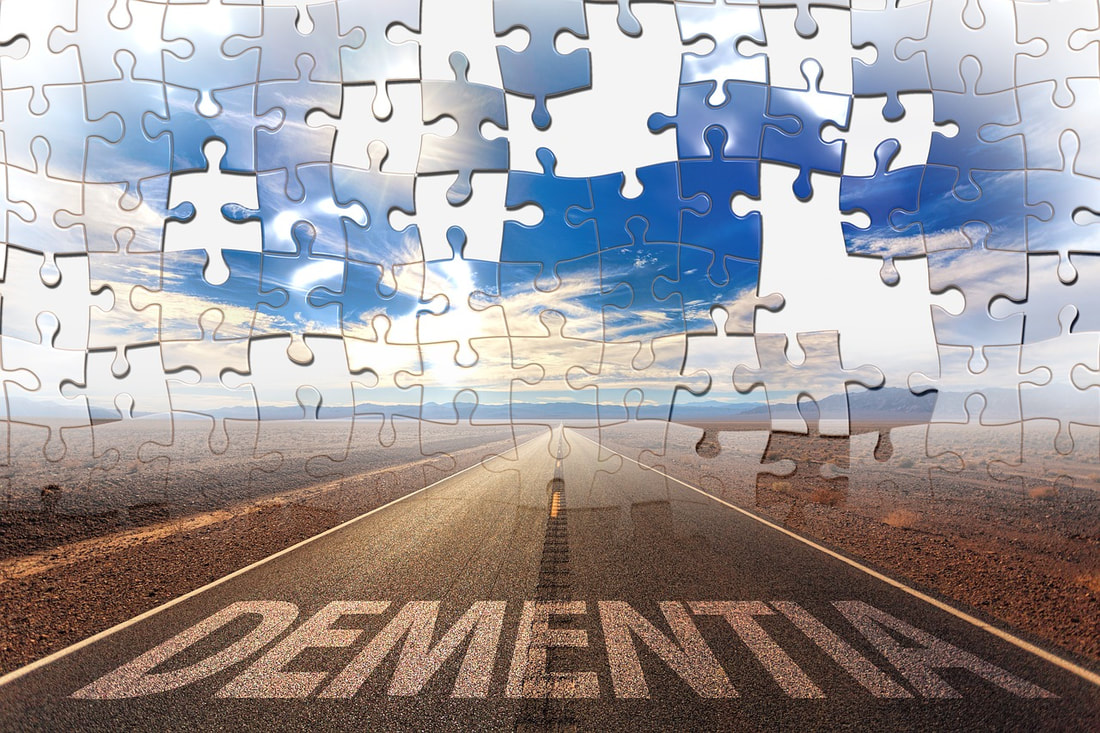|
By Anna Hazard
View the Rest of the SeriesLewy Body Dementia
Lewy Body Dementia, also called cortical or diffused Lewy body disease, is the third most common type of dementia accounting for between 5 - 10% of all cases. Lewy Bodies are spherical masses of protein that are found abnormally developing inside nerve cells, often displacing other components within the cell. They are also often found within the patients of other brain disorders such as Alzheimer's and Parkinson's Disease.
Many people with this type of dementia also have bodily symptoms such as hunched postured, rigid muscles, as well as trouble walking or otherwise moving. Due to the presence of the Lewy Bodies as well as the various overlapping symptoms, it's believed that Lewy Body Dementia, Parkinson's Disease, and Parkinson's Disease Dementia may all be caused by abnormalities in how the brain processes the protein alpha-synuclein.
With these shared symptoms, the general diagnosis is Lewy Body Dementia if dementia symptoms develop before any movement problems and vice versa for Parkinson's Disease if signs of dementia do not appear for more than a year after movement problems manifest.
In addition, in comparison to Alzheimer's, memory loss is less prominent in early stages while symptoms such as hallucinations and other visual based problems as well as general disruptions of the autonomic nervous systems causing falls, dizziness, blood pressure drops, problems standing, and urinary incontinence are more prominent in early Lewy Body dementia. There is currently no cure for this type of dementia and thus treatments focus on helping alleviate symptoms.
Frontotemporal Dementia
Frontotemporal Dementia, also known as Pick's Disease, frontotemporal degeneration disorder, or frontal lobe disorders, is the fourth most common type of dementia although it's noticeably less widespread compared to Alzheimer's, Vascular Dementia, and Lewy Body Dementia.
Frontotemporal Dementia is used to describe several different types of disorders caused by ongoing nerve cell damage in the brain's frontal and temporal(side) lobes which are the areas most commonly associated with language and behavior. This type of dementia has three main subtypes. Behavior Variant (also known as bvFTD) is characterized by changes in personality and behavior as the nerve cell damage primarily occurs within the parts of the brain that control behavior, conduct, judgment, and empathy. While this normally occurs in patients that are 50 - 60 years old, early onset in patients as young as their 20s have been known. In general, this type of dementia tends to have a younger diagnosis range than other types such as Alzheimer's. Primary Progressive Aphasia (PPA) tends to affect language skills, writing, and semantic comprehension. This normally occurs in midlife before age 65, but later onset has also been known. With this form of dementia, patients tend to lose the ability to understand or formulate words with symptoms such as labored or ungrammatical speech. These language problems tend to be far more pronounced than with other types of dementia such as Alzheimer's. The third subset of Frontotemporal Dementia is known as Disturbances of Motor Function with symptoms that hamper movement, muscle development, and muscle maintenance. This subtype of dementia is further broken down into three common disorders as part of the degeneration spectrum for muscle and motor function.
The different subtypes of Frontotemporal Dementia tend to be diagnosed earlier than other forms of dementia with Behavior Variant and Primary Progressive Aphasia being nearly as common in midlife (45 - 65 years old) as younger on-set Alzheimer's while they are much less commonly diagnosed in seniors over 65 years old. Changes in behavior tend to be one of the most common early symptoms of Frontotemporal Dementia while memory loss in the later stages is markedly less prominent as compared to other dementias such as Alzheimer's. As there is no cure, treatments are focused on helping to improve quality of life for the patient particularly in regards to emotions and moods such as agitation, irritability or depression.
General Dementia Resources
National Institute of Aging's Guide to Dementia
World Health Organization Dementia Fact Sheet Alzheimers Navigator: Creating Personalized Action Plans for Dementia Family Caregiver's Alliance Guide to Understanding Dementia Behavior Dementia Care Central's Programs that Compensate Caregivers for Dementia Care Ella Stewart Care's Dementia & Alzheimer's Articles Maryland Dementia Resources
Alzheimers.net's Maryland Dementia Care Resources and Facilities
A Place for Mom's Guide to Alzheimers Care in Maryland Alzheimer's Association of Maryland Arbor Company's Dementia Resources in Central Maryland Caring.com's Memory Care Facilities in Baltimore County Blair House at Stoneleigh Memory Care Facility (New!) Town Square - Perry Hall Alternative Senior Day Care (1950s Style)
1 Comment
First and foremost, your positivity is infectious! In a world where negativity often dominates, stumbling upon a blog like yours is like discovering a hidden gem. Your ability to find the silver lining in every situation is truly admirable and serves as a beacon of hope for your readers.
Reply
Leave a Reply. |
AboutNews updates, tips, and guides on senior care, senior health, stress relief and a host of other caregiving related topics from the professionals at Ella Stewart Care. |





 RSS Feed
RSS Feed
